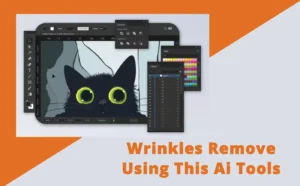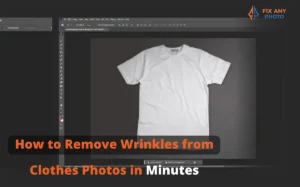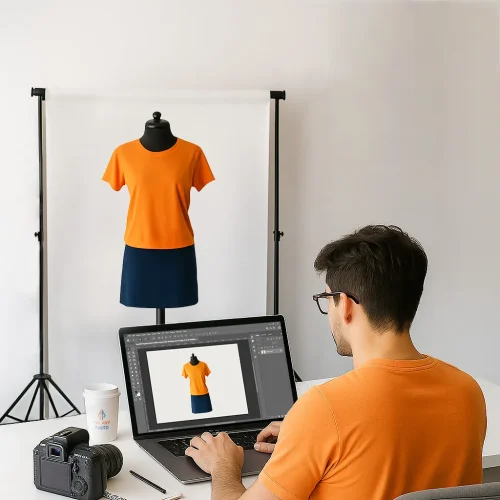Shoe photography is absolutely essential for shoe businesses. It’s not just a question of what the product looks like—making them want it is more about it. You want them to imagine how the shoes will sit on their feet, how they will look when they are being worn, and how they will become part of their existence.
I’ve been there – preparing to do what I anticipate will be a short shoe shoot, only to end up with images that are flat, awkward, or just. wrong. The thing is, shoe photography is a special sort of challenge in and of itself. Those lovely product shots you see online? They’re not by accident. There’s real technique involved with getting footwear to present its absolute best.
Shoe photography is a specialized field that involves capturing the beauty and detail of shoes. Shoe photography has gained a lot of popularity over the past several years, particularly with the increase in e-commerce sites and social media platforms where visual aesthetics play a significant role in attracting customers. Proper shoe photography not only reveals the design and craftsmanship of the shoes but also conveys their functionality and fashion.
In this guide, we’ll uncover the techniques behind scroll-stopping shoe photography—the kind that captures attention, elevates brands, and makes online businesses eager to hire you.
Lighting and Composition: Tips for Capturing the Perfect Shoe Shot

If you’re a photographer looking to level up your shoe photography, lighting and composition are where it all begins. Good lighting doesn’t just make the product visible—it gives it life. Shoes are full of details: textures, stitching, curves, and materials. The right light brings all of that out.
Start with soft, diffused light. Natural window light works great, or you can use a softbox if you’re in the studio. Avoid harsh shadows and blown-out highlights—they hide detail and make shoes look flat. A reflector or a white foam board can help bounce light into darker areas, especially under or inside the shoe.
Now let’s talk composition. Don’t just center the shoe and click. Think about what angle tells the best story. A slight side angle often shows both the shape and the branding. Use the rule of thirds to guide your framing, and give the shoe some breathing room in the shot.
If you’re shooting a set—say front, side, back, and top-down—keep your lighting and camera height consistent. That consistency not only looks more professional but also makes your set feel polished and ready for a brand or online store.
In short, thoughtful lighting and smart composition can make a basic shoe look premium. And when your shots look premium, clients notice.
Choosing the Right Background: Enhancing Your Shoe Photography

In shoe photography, the background does more than just sit behind the product—it sets the tone. A good background can highlight your shoe’s design and personality, while the wrong one can make even the best pair look out of place or overlooked.
If you’re aiming for a clean, product-focused look, simple backdrops like plain white, soft grey, or textured neutrals work well. They keep the attention on the shoe and create a professional feel. But sometimes, you need a little more character. That’s where creative backgrounds come in.
Think about the type of shoe you’re photographing. A pair of luxury heels might look stunning against a marble surface or velvet fabric. Sneakers? They often pop on urban textures like concrete or asphalt. Boots can feel more authentic when shot on a wooden floor or outdoors.
Color plays a big role too. Make sure there’s enough contrast between the shoe and the background so your product stands out. You want harmony, not competition.
At the end of the day, your background should match the vibe of the shoe and help tell its story. It’s not just about what’s behind the shoe—it’s about making the whole photo feel intentional and on-brand.
Styling and Staging: Creating Eye-Catching Shoe Displays

Styling and staging can completely transform how your shoe photos look and feel. It’s not just about placing a pair of shoes on a surface—it’s about creating a scene that grabs attention and makes the viewer want to learn more.
Start by thinking about how the shoes will be positioned. Do they look better standing tall, leaning casually, or in motion? Use shoe stands, stuffing, or even fishing line to help maintain shape or create the illusion of floating or jumping. Little tricks like these can bring your photos to life and make them feel dynamic rather than flat.
Don’t be afraid to break symmetry—placing one shoe slightly ahead of the other or turning them at a slight angle can add movement and energy. You can also incorporate subtle props that match the brand vibe—like a gym towel with sneakers or a touch of greenery for earthy sandals.
Most importantly, watch the small details. Straighten the laces, smooth out creases, and make sure the brand logos are clean and clearly visible. These little adjustments make a big difference in how polished and professional the final shot looks.
A well-staged photo tells a story—and invites your audience to imagine themselves in those shoes.
Editing and Filters: Enhancing Your Shoe Photos for Online Use

Taking the photo is just the first step—editing is where your shoe shots truly come to life. Whether you’re showcasing sneakers, boots, or designer heels, careful post-processing can bring out the shoe’s texture, structure, and overall appeal. For online use—be it e-commerce, a portfolio, or a brand website—clean, high-quality edits are essential to making a strong impression.
Start with the basics. Adjust the brightness and contrast to give your photo the right balance and energy. Boosting exposure can lighten shadows and reveal hidden details, while increasing contrast adds dimension. Just be cautious—over-editing can make shoes look unnatural or misrepresented. Keep the look realistic and true to the product.
Sharpness and clarity are key for highlighting fine details like stitching, materials, or logo placement. These small touches can often make or break a customer’s perception of quality. Make sure textures pop without creating grain or halos.
Color accuracy matters even more in online presentations. Adjust the white balance to ensure true-to-life tones. A leather boot should look rich and earthy, while a white sneaker should appear crisp—not yellowed or blue-tinted. Reliable color helps build trust, especially in e-commerce, where buyers rely on photos alone.
If you want to maintain a consistent aesthetic across your site or online portfolio, use subtle filters or presets to unify the visual style. Just don’t go overboard—editing should enhance, not overshadow, the product.
Ultimately, strong editing helps your shoes look their best while staying authentic. A consistent, polished approach ensures your work looks professional and reliable—qualities that matter whether you’re attracting clients, selling products, or building your brand online.
Capturing Details: Highlighting the Unique Features of Your Shoes

In shoe photography, it’s often the little things that make the biggest impact. While full product shots show the overall look, close-up detail shots reveal the craftsmanship that sets a shoe apart—things like stitching, materials, texture, and small design elements. These subtle features not only add visual interest but also help tell the story behind the product.
Using a macro lens or simply zooming in carefully allows you to capture those intricate details without distortion. Focus on areas that matter most: the stitching around the sole, the texture of the leather or fabric, the tread on the bottom, or branded tags and logos. These shots give potential buyers or clients a closer look at quality and design—something flat, wide shots often miss.
Lighting plays a big role in detail photography. Soft, directional light can enhance texture and shadow without overpowering the subject. Pay close attention to reflections, especially on glossy or metallic finishes. A small shift in angle can make a huge difference.
Detail shots also break the monotony of standard product photos. They add variety and depth to your online portfolio or product gallery. When done well, they invite the viewer to look closer—to appreciate the shoe not just as a product, but as a crafted piece of design.
Don’t underestimate the power of storytelling through details. These images can speak to the quality, style, and personality of the shoe in a way that a simple front-facing photo never could. In today’s competitive market, showcasing these elements can be what turns a casual viewer into a loyal customer—or earns you that next client.
Incorporating Props: Adding Interest to Your Shoe Photos

Props can be a game-changer when it comes to shoe photography. They add context, personality, and flair to your shots, helping to tell a story that goes beyond just the product. The key is to choose props that complement the shoe’s style and brand vibe—without stealing the spotlight.
Start by thinking about the lifestyle the shoe represents. Is it a sporty sneaker designed for summer adventures? Try adding sunglasses, a water bottle, or even a skateboard to evoke that active, outdoorsy feel. Are you shooting rugged boots meant for fall or winter? Autumn leaves, pine cones, or a rustic wooden bench can add warmth and a seasonal touch.
Props don’t need to be complicated or expensive—sometimes, simple elements like a textured fabric, a colorful rug, or a minimalist stool can make your shot pop. The trick is to use them sparingly and thoughtfully, so the focus remains on the shoe itself.
Be mindful of scale and placement. Props should support the composition and guide the viewer’s eye toward the shoe, not distract from it. Also, consider colors and textures: props that contrast subtly with the shoe can make it stand out, while props that blend too much might cause the shoe to get lost in the scene.
Ultimately, props are storytelling tools. When used well, they add depth and interest, making your shoe photos more engaging and memorable. They help viewers imagine the shoe in real life—and that’s a powerful step toward making a sale or winning a client.
Showcasing Different Angles: Capturing Your Shoes from Every Perspective

When photographing shoes, don’t limit yourself to just one or two standard angles. Variety is key—not only does it give your photos more energy, but it also helps potential buyers or clients get a complete understanding of the product. After all, shoes are three-dimensional objects with lots of details, and showing them from multiple perspectives can make all the difference.
Start with the basics: shoot from the front, side, and back to cover all the main views. But don’t stop there. A top-down shot can showcase the shoe’s shape and laces, while a low-angle shot can make it look more dramatic and powerful. Don’t forget the sole—especially if it has a unique tread pattern or branding. Capturing the bottom of the shoe gives a sense of quality and craftsmanship that buyers appreciate.
Each angle highlights different features, textures, or design details, allowing viewers to appreciate the shoe’s full story. This variety also makes your portfolio or product gallery feel more dynamic and engaging, holding the viewer’s attention longer.
Remember to keep your lighting and background consistent across angles to maintain a professional look. And don’t be afraid to experiment with slight shifts in perspective or focal length—sometimes the smallest change reveals a new, compelling detail.
Ultimately, showcasing shoes from every angle builds trust. When buyers can see the product fully, they’re more confident in what they’re purchasing—and that means more sales and happier clients for you.
Utilizing Natural Elements: Taking Your Shoe Photos Outdoors

Taking shoe photos outdoors opens up a world of creative possibilities. Natural environments bring a fresh, authentic vibe that’s hard to replicate in the studio. Plus, natural light can add warmth and richness to your shots, making the shoes feel more real and relatable.
When choosing your outdoor location, think about the shoe’s style and brand story. Sneakers might look great on a busy city street or a graffiti-covered wall, while hiking boots belong on a forest trail or rocky terrain. Sandals and summer shoes fit perfectly on the beach or near water. Matching the setting to the shoe helps create a cohesive, compelling image that connects with your audience.
Natural light is one of the best tools you have outside, but it can also be tricky. The soft, diffused light during golden hour—shortly after sunrise or before sunset—is ideal for shoe photography. It casts gentle shadows and adds a warm glow that enhances textures and colors. On the other hand, harsh midday sun can create strong shadows and highlights that distract from the shoe’s details, so try to avoid shooting during that time or find some shade.
Another tip is to use the environment itself as part of your composition—rocks, leaves, or pavement can add texture and context. But keep an eye on distractions in the background and make sure the shoe stays the star of the shot.
Shooting outdoors takes a bit more planning, but the results can be stunning. Natural settings add life and story to your shoe photos, making them stand out whether you’re showcasing products online or building your portfolio.
Creating a Cohesive Feed: Tips for Maintaining a Consistent Aesthetic with Your Shoe Photos

When showcasing your shoe photography online—whether on a website, portfolio, or e-commerce platform—consistency is key. A cohesive look across your photos not only makes your work appear polished and professional but also helps build a strong personal brand that clients and buyers will recognize and trust.
Start by choosing a color palette that complements the shoes you shoot most often or reflects the vibe you want to convey. This might mean using cooler tones for sleek, modern sneakers or warm, earthy hues for leather boots. Carrying similar color tones across your images creates harmony and a sense of unity.
Lighting style is another important factor. Try to maintain consistent lighting conditions or editing styles so your photos look like they belong together. For example, if you prefer soft, natural light, avoid mixing in harsh studio lighting without balancing it properly. The same goes for editing—stick to a particular approach when adjusting brightness, contrast, and color balance. This prevents your feed from feeling jarring or chaotic.
Pay attention to composition and background choices as well. Repeating certain framing techniques, angles, or background textures can subtly tie your photos together without being obvious.
Ultimately, a consistent aesthetic helps your work stand out and makes browsing your collection a pleasant experience. When your photos flow well visually, visitors spend more time exploring your portfolio or online store—and that can lead to more inquiries, sales, and long-term success.









